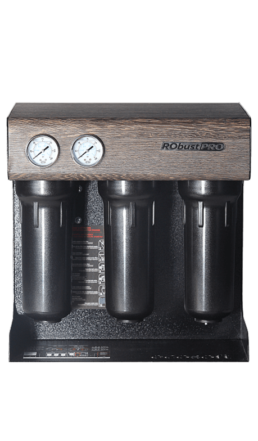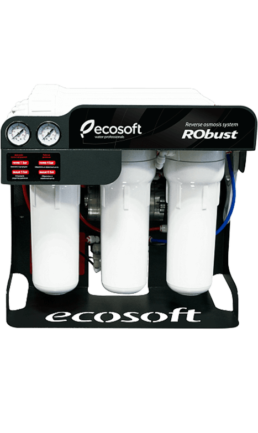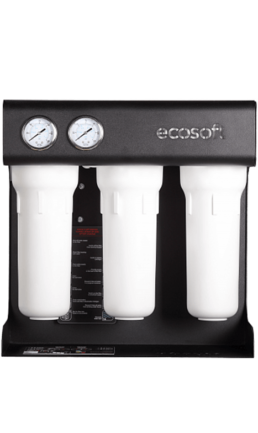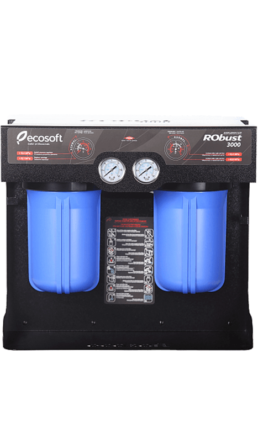REVERSE OSMOSIS
What is reverse osmosis?

Reverse Osmosis
Reverse Osmosis Systems remove commonly found chemical contaminants (metal ions, aqueous salts), such as sodium, chloride, copper, chromium, and lead. They will also reduce arsenic, fluoride, radium, sulfate, calcium, magnesium, potassium, nitrate, and phosphorous.
Reverse Osmosis (RO) is a water purification technology that will remove 97% of all TDS (Total Dissolved Solids) from the water. They use semipermeable membranes to remove ions, molecules and larger particles from drinking water.
In reverse osmosis, an applied pressure is used to overcome osmotic pressure that is driven by chemical potential differences of the solvent. Reverse osmosis can remove many types of dissolved and suspended chemical species as well as biological ones (mainly bacteria) from water, and is used in both industrial processes and the production of potable water. The result is that the solute is retained on the pressurised side of the membrane and the pure solvent is allowed to pass to the other side. This membrane should not allow large molecules or ions through the pores, but will allow smaller components of the solution (such as solvent molecules, i.e., water to pass freely.
In the normal osmosis process, the solvent naturally moves from an area of low solute concentration (high water potential), through a membrane, to an area of high solute concentration (low water potential).
Around the world, household drinking water purification systems, including a reverse osmosis step, are commonly used for improving water for drinking and cooking.
Most Reverse Osmosis Systems include a number of stages;
A sediment filter to trap particles, including rust and calcium carbonate. A preparatory step to prepare the water for treatment.
An activated ‘Pre’ carbon filter to trap organic chemicals and chlorine, which will attack and degrade a thin film composite membrane.
At least one reverse osmosis filter or membrane, which is a thin film composite membrane. Systems can be fitted with multiple membranes.
A ‘Post’ Carbon Filter to improve the taste, colour and odour of the treated water.
In some cases, Ultraviolet is added to the stems to sterilise any microbes that bypass the filtering process.
Products using reverse osmosis
ROBUST PRO

A compact high-capacity reverse osmosis unit for use in preparing barista coffee and other hot beverages. Its multi-stage filtration system purifies water and enriches it with minerals essential for perfect coffee taste and aroma.
ROBUST 1000

A compact high-capacity reverse osmosis unit for use in a professional kitchen. It produces clean and safe water for general catering use. Output 55 to 60 litres per hour.
ROBUST 1500

A compact high-capacity reverse osmosis unit for use in a professional kitchen. It produces clean and safe water for general commercial catering use. Output 75-80 litres per hour.
ROBUST 3000

A compact high-capacity reverse osmosis unit for use in a professional kitchen. It produces clean and safe water for general catering use. Output 145-150 litres per hour.

